Something was wrong with the turtle we call PT-160051.
It was near midnight on Wednesday 3 May, and the satellite transmitter we had affixed to her shell 16 days earlier had stopped working. Programmed to record a GPS location every three hours, the tracker showed no readings after 7:37 p.m. that evening.
With a growing sense of unease, Richard Hamilton, director of the Nature Conservancy’s Melanesia program, quickly checked the location of the other nine hawksbill sea turtles — all were accounted for. He wondered if the tag had malfunctioned — possible but unlikely — or if something far more grim had happened.
The uneasy silence continued the following day. And by nightfall Hamilton realized that a second turtle was missing.
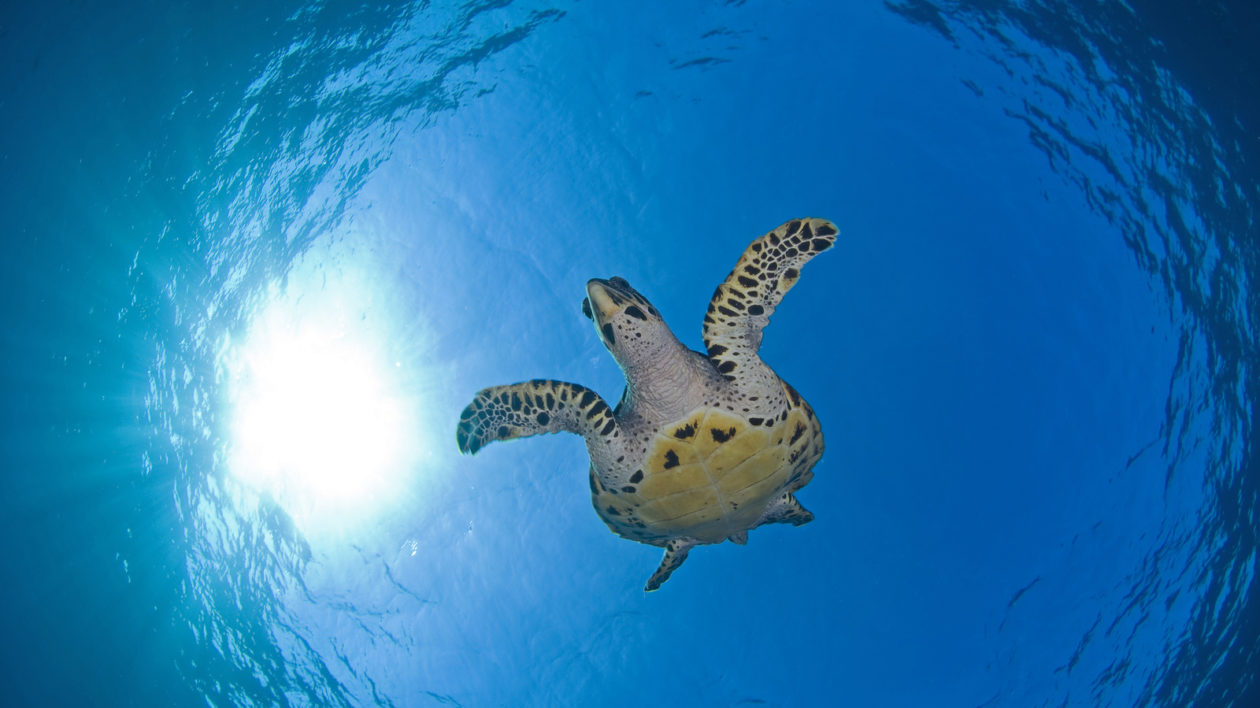
The Weak Link in Protecting Hawksbills
Some six hours earlier in Wagina’s Nikumaroro village, a group of men quietly loaded their boats with petrol, flashlights, and machetes, and set out to sea under the cover of darkness. They were heading for the Arnavon Islands, and they were hunting turtles.
It’s still legal to kill a sea turtle in the Solomons — but only for subsistence. In addition to the prohibitions on trading endangered species under CITES, the Solomon Islands 1998 Fisheries Act also makes it illegal to kill a nesting turtle (one that has crawled ashore to lay eggs) and to sell, purchase, or export any turtle product.
But without enforcement, these paper protections do little to stop poaching. Visitors can easily find hawksbill-shell bracelets and earrings for sale at multiple locations in Honiara, including the airport’s international departures lounge.
“The Solomons actually has great legislation for turtles, but it’s very hard to enforce,” explains Hamilton. Part of the enforcement problem is a capacity issue — money is tight and the majority of the country is remote, hindering outreach efforts. Even where law has a presence, enforcement is complicated by the close-knit nature of communities. “If you are going to prosecute someone, you are essentially prosecuting your relatives,” says Hamilton, “so you run the risk of serious backlash.”
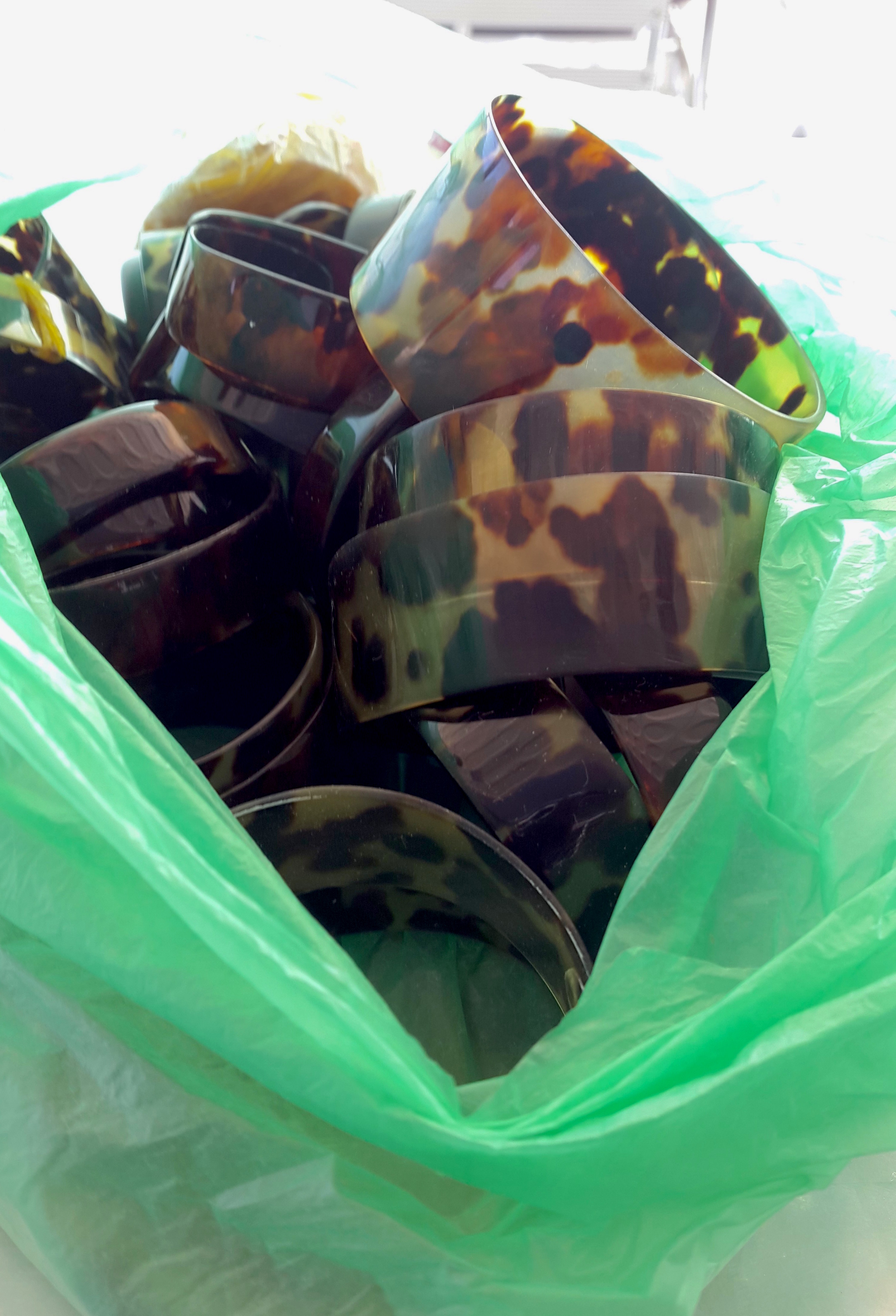
The illegal trade is growing — fueled by the growing wealth market in China and the absence of enforcement — taking a direct toll on hawksbills in the Arnavons and threatening conservation efforts to save the species.
Hamilton had just spent two weeks in the Arnavons, tagging turtle number PT-160051 and nine others with satellite transmitters to gather data on where these females migrate to during and after the nesting season. As he patrolled the beaches at night in search of nesting females, the conservation rangers told Hamilton that they’re observing increasing evidence of poachers on Sikopo, the primary nesting beach. They also repeated rumors of a shell buyer in Wagina, one of the three communities that came together to protect the Arnavon Islands 20 years ago.
Worried by these reports, Hamilton and John Pita, the Conservancy’s environment coordinator for Isabel Province, arranged for the rangers to set up a temporary camp on Sikopo Island, in addition to the permanent camp on Kerehikapa, to monitor and protect turtles on that island during the peak nesting season.
But on the night of 3 May the island was empty. The rangers were changing shifts, and while the first group had returned to their home villages — including Wagina — the replacement crew was held up by fuel shortages. The islands were unguarded, and the poachers knew it.
The islands were unguarded, and the poachers knew it.
The Arnavons Community Marine Conservation Area and The Nature Conservancy are trying to get the Arnavons listed under the Solomon Islands Protected Areas Act, adding additional protection by outsourcing enforcement to the local rangers, granting them legal authority to arrest poachers.
While they wait for governmental approval, Hamilton and Pita have another tactic to fight the illegal hawksbill trade. Funded by a grant from the International Union for the Conservation of Nature, the Conservancy will soon undertake a year-long study to examine the extent of the illegal shell trade in the Solomons, from the sea all the way to the capital city.
“We really have no idea what the current harvest rates are, legal or illegal, in the Solomons” says Hamilton, “and knowing how heavily turtles are being overharvested is the first step to securing better enforcement of existing laws.”
Working with colleagues at Australia’s science agency, CSIRO, Hamilton and Pita will train community rangers from Isabel and Choiseul Provinces to record catch data for any harvested turtles, including: the location of capture and kill, date, species, length, and photos of the turtles’ reproductive organs after they have been butchered. They’ll also ask whether or not the turtles are caught for food or for sale. (Even though harvest for sale is illegal, Hamilton explains that the lack of enforcement means that many people will admit if they’re breaking the law.) The photographic data will help Hamilton gauge how many of the harvested turtles are experienced breeding females, another indicator of population health.
“We will use that data to first establish that turtles are being overharvested, whether legally or illegally,” says Hamilton. “Then we will quantify the scale of the turtle trade and use that to educate local fisheries officers on why they need to start enforcing the existing policy.”
Hamilton and Pita also plan to send contacts from the local communities undercover in Honiara to better understand how many individuals are buying turtle shell for export. They suspect that just a handful of individuals control the trade out of Honiara and on to Asia.

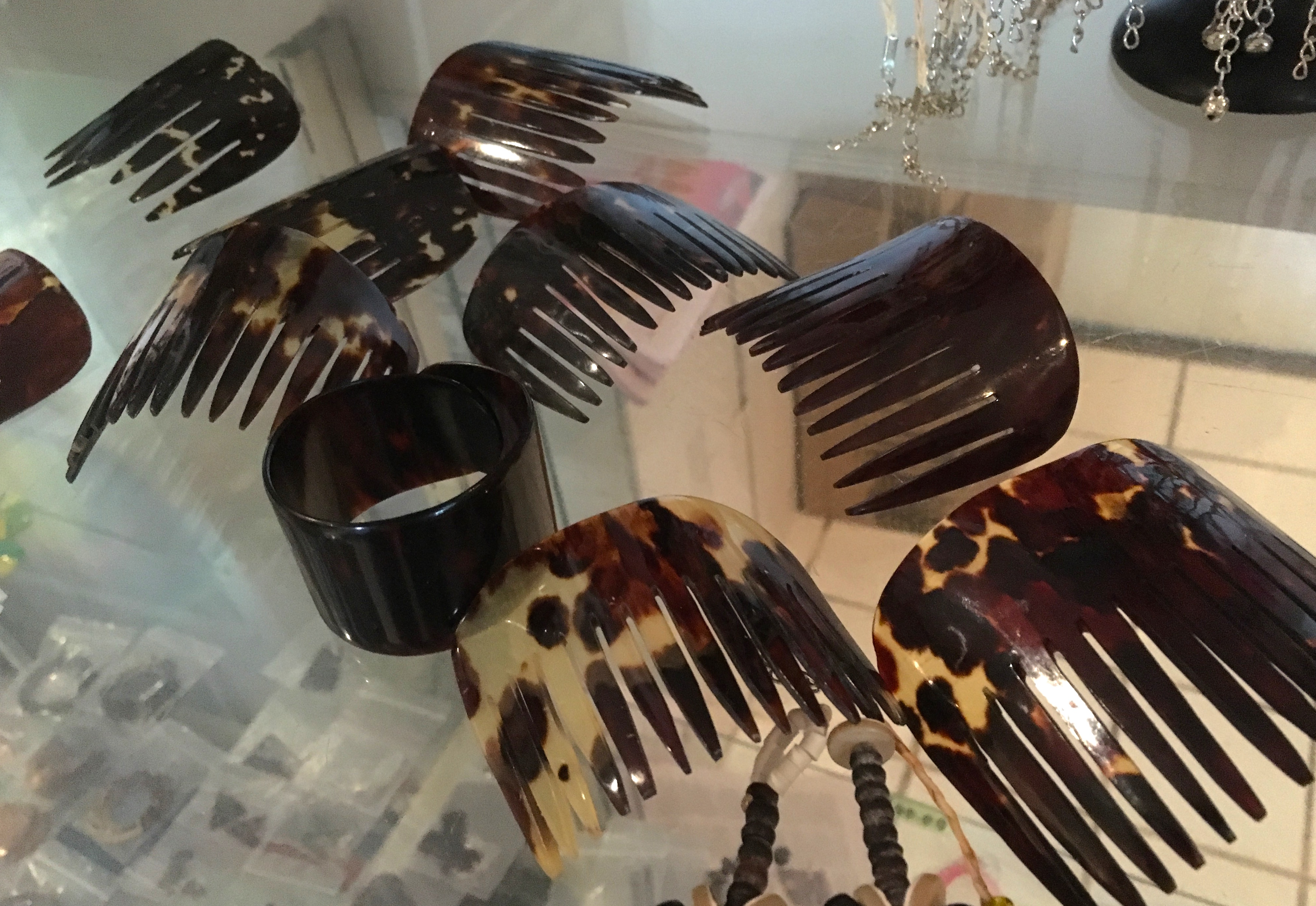

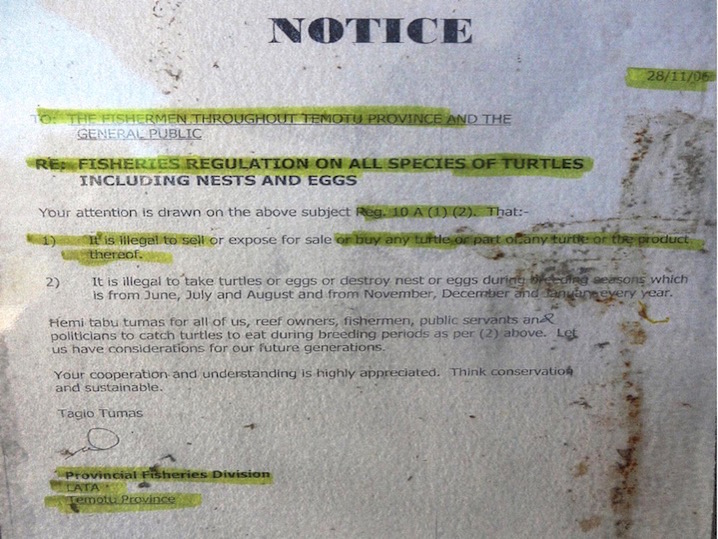
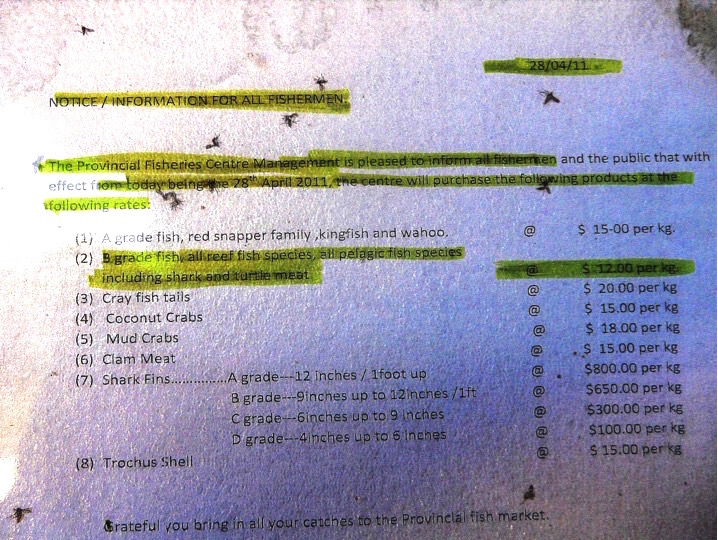
Footprints in the Sand
Late in the evening on 4 May an emergency dispatch came in on the radio from the rangers on Sikopo; poachers were roaming the island, searching for turtles that crawled out of the water to nest. The rangers needed backup, fast. Pita answered the call, sending a boat of reinforcements speeding across the channel from the main base.
The two groups of men confronted each other on the beach. Things took a violent turn, the poachers yelling and throwing stones, forcing the rangers to retreat for their own safety. Darkness obscured the poachers’ faces, but the rangers caught a good enough look at their boats to recognize them — it was the Nikumaroro fishermen.
When they returned an hour later the poachers were gone, leaving nothing but footprints in the sand.
It would be another 24 hours before Pita was able to contact Hamilton and relay the news. Comparing notes, they came to the undeniable conclusion: PT-160051 and PT-160048 were dead. The poachers had killed our turtles for their shells, hacking off the satellite tags with a machete and tossing them into the ocean.
“For me, this incident has certainly made the situation seem more urgent,” says Hamilton. “And it reinforces the fact that success in conservation is an ongoing battle.”
As the data-gathering on the illegal shell trade begins, Hamilton and Pita are gathering funding to build a permanent camp on Sikopo Island — in addition to the existing station on Kerihikapa — which Hamilton says is a necessity if we’re serious about protecting Arnavons turtles. Hopefully, increased vigilance combined with increased protection from the 2010 Protected Areas Act will help put a halt to poaching in the Arnavons.
“It’s a major setback, but it’s not time to walk away,” says Hamilton. “It’s time to strengthen our resolve.”
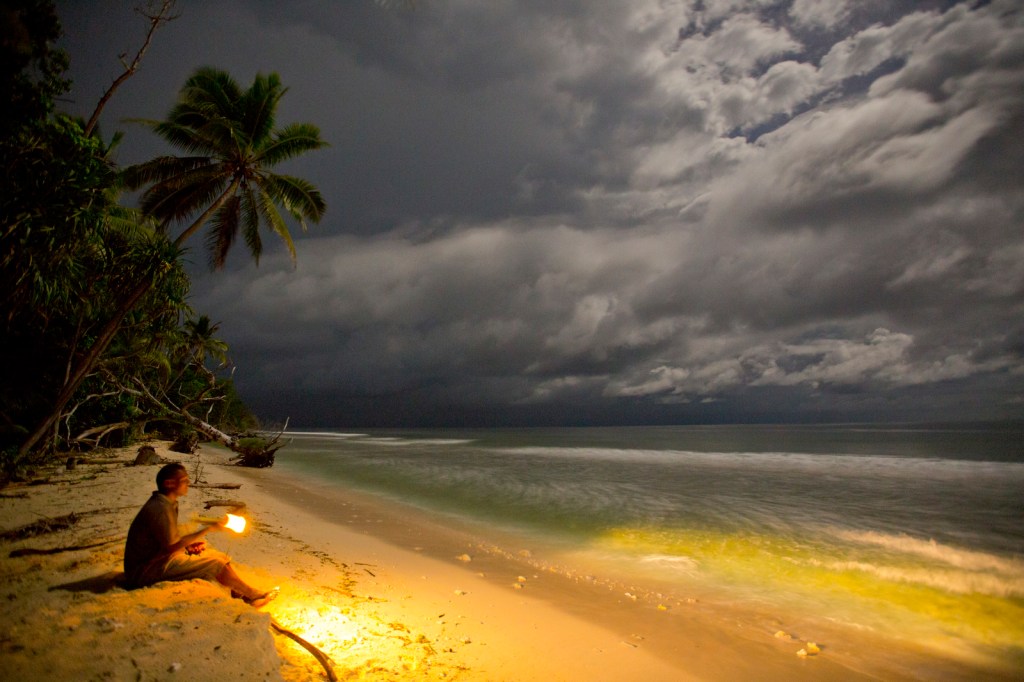



No poaching
Unacceptable cruelty
Thank you for all your hard work in saving these turtles.
ANOTHER SICKENING EXAMPLE OF GREED AT ANY PRICE – AND ENOUGH CORRUPTION TO ALLOW THE OFFENDERS TO IGNOR ANY LAWS WHICH MIGHT EXIST TO PROTECT SEA LIFE.
AND AGAIN – CHINA!
I couldn’t even read the entire article due to my throat constricting with grief. Feeling so helpless to do anything other than the letters I write and the minimum donations I submit to help save the turtles .. and the lions .. and the rhinos .. and …. What is this world coming to other than one dominated by self-focused, self-caring humans, not seeming to care about the saving grace of other species? No more to write at this time as I’ve got to pull myself out of this downed mood in order to functionally work for the remainder of the day. Thank you to the scientists, volunteers and writers who do all that is possible to keep the world aware of the cruelty out there, and to aid with a saving grace to all of the critters that are disappearing on our planet.
I am so grateful that you are all so dedicated and determined. I can’t stomach the thought of the scene. Thank you for doing what so desperately needs doing.
I absolutely agree with everything Heather said – couldn’t have said it better myself. Keep up the good fight!
NO END TO CRUELTY, STUPIDITY AND RAVENOUS ACQISITION OF BAUBLES AND BANGLES BY HUMANS. USEFUL ONLY TO THE SLAUGHTERED CREATURES…
SMH. These turtles are killed and their shells are made into bracelets?
SMH
Female sea turtles lay approximately 50 eggs once a year – they return to the island or beach where they were hatched. Precious few of those baby turtles survive to adulthood – the last I heard it was 1 in 1,000 that become adults. One gets to death of the slaughter of our precious wildlife, both in our seas and oceans and on land – elephants, orangatangs, gorillas, tigers, lions, cheetahs, leopards. in the US mustangs, wild donkeys, cougars, bison, bears, beaver…the list goes on an on. I’ve to hate those who hunt indiscriminately, trophy hungers who feed their egos by having the head of an animal they’ve killed with high powered rifles on their walls. This world is being systematically destroyed by greed and corruption. It’s enough – stop it now!!!!!!
“STOP” THE SLAUGHTER!!!! “GOD SEES EVERYTHING”! “ALL YOU RESPONSIBLE FOR THE HOLOCAUST AGAINST ANIMALS.. AND IN THIS CASE THESE TURTLES, “WILL” BE HELD ACCOUNTABLE!
Stories of wanton cruelty like this make me ill- they really do. They need more than just new laws, however, to stop this awful trade- they need people who have enough of a conscience to step up to the plate and take real responsibility for enforcing existing laws. As for the turtles, they are beautiful creatures which are part of God’s Earth- and we DON’T have a right to drive them to extinction. I commend the NC staff and volunteers for their bravery in standing up to the continuous threat these poachers cause.
these poachers must be stopped!!!!!
help preserve our nature back to its original position
Such a shame to lose such beautiful and docile creatures. Very sad. I spent many years living in the Philippines, Okinawa, Micronesia and Melanesia. It’s a very difficult position, as an “outsider” to come in and try to teach the locals the needs for marine conservation, when a portion of their earnings comes from an old practices. Been there, done that. At times, it’s a very fine line to walk, indeed. Don’t let disappointment turn into defeat.
Good luck.